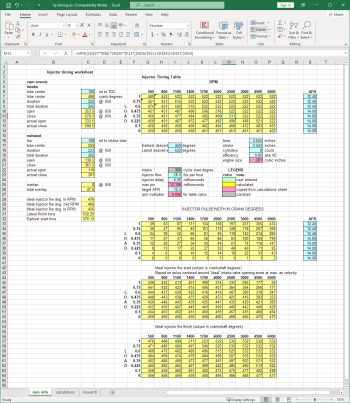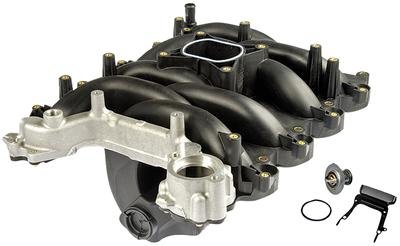March 28, 2013
Finally got around to doing some more tuning this afternoon.
Maxing out the crank ISC duty cycle seems to have done the trick - about a dozen startups at various ECTs and it never gave any trouble.
As far as the MAF transfer, I loaded up the value file and compared commanded to actual A/Fs while in open loop. Pretty consistent across the board, as a whole it's about 3% too lean from idle up to 800 counts. I still need to check my revised transfer function before I put the 30# injectors back on and fine tune for those, but I think I'm pretty close now.
March 29, 2013
Finally got the A/F dialed in. Peak airflow comes in around 29.5 lbs/min. Average STFTs over a 6 mile city test drive were .988 and .997, WOT A/F is between 12.3 and 12.5... I'd say I'm in business.

Thanks GM for the pointers, for a while there I felt like I had no idea what I had gotten myself into.
Now I must decide if I should play with spark...
May 10, 2013
Soooooooo I've started messing around with injector delay. I've done the calculations and have my cam's valve timing events based on crank degrees:
0, TOP OF POWER STROKE
119, EXHAUST OPENS
180, BOTTOM OF POWER STROKE. START OF EXHAUST STROKE
250, EXHAUST FULLY OPEN
333.5, INTAKE OPENS (EXHAUST STILL OPEN)
360, TOP OF EXHAUST STROKE. START OF INTAKE STROKE. BOTH VALVES OPEN.
381, EXHAUST CLOSES (INTAKE STILL OPEN)
466, INTAKE FULLY OPEN
540, BOTTOM OF INTAKE STROKE. START OF COMPRESSION STROKE
598.5 INTAKE CLOSES (BOTH VALVES CLOSED)
720 TOP OF COMPRESSION STROKE, START OF POWER STROKE
And I'm doing the number crunching based on this post:
http://eectuning.org/forums/viewtopic.php?t=11334
The goal, as I understand from having read a few threads on the SCT forum, is to have all of the needed fuel sprayed on top of a closed intake valve so as to let it evaporate for maximum atomization when it is drawn into the cylinder. At high RPM/load conditions such as WOT, knowing the pulsewidth is necessary to figure out how late you can finish injecting so as to be sure the fuel needed is delivered before the intake valve opens, but after it closes. That is a total crankshaft duration of 455 degrees. With my injectors and 100% load, the max. pulsewidth will be 15.5 ms with a 12.4:1 AFR. At 100% load and 6000 RPM, the crank will rotate 558 degrees in the time it takes to inject the needed fuel - which would necessitate fuel be injected from the time the valve closes through the first 76.5 degrees of the intake stroke (from 598.5 degrees through 436.5). Since I'll likely never see more than 90% load at 6000 RPM the "theoretical" max. pulsewidth would be 14ms, or 504 crank degrees (injecting fuel from 598.5 through 382.5, or into the first 49 degrees of the intake valve open event).
Anyway, to the point of this post. If I follow those calculations to the letter I should be able to come up with the optimal fuel injection finish points, in crankshaft degrees, for every load/RPM combination such that the fuel starts injecting onto the closed intake valve immediately after it closes and sits there for the entire duration it is closed, soaking up as much heat as possible and becoming as atomized as is possible.
The questions here are:
a) Is there a point when the fuel is sitting on the valve TOO long (e.g. at low RPM and pulsewidth conditions)? Should I have it wait a short time after the valve closes to start injecting fuel? E.G. at 15% load and 800 RPM (my idle) if I started injecting as soon as the valve closed I'd have an injector delay of 610 degrees, and the fuel would sit on the back of the intake valve for .092 seconds.
b) Will there be any issues if fuel is spraying onto the valve as soon as it closes and continues to spray after it has opened again (in the example above)?
The stock delay table has fuel delivery completing at 112 degrees at 75% load/1700 RPM and up, which with my current delays (stock) would mean fuel delivery begins somewhere around 413 degrees (or later) - still in the last 2/3 of the intake open event of the previous rotation's intake stroke!

Sorry for the long winded post and if it isn't very coherent. I'm usually not up this late but I got caught up in the thrill of crunching numbers.












 (j/k)
(j/k)